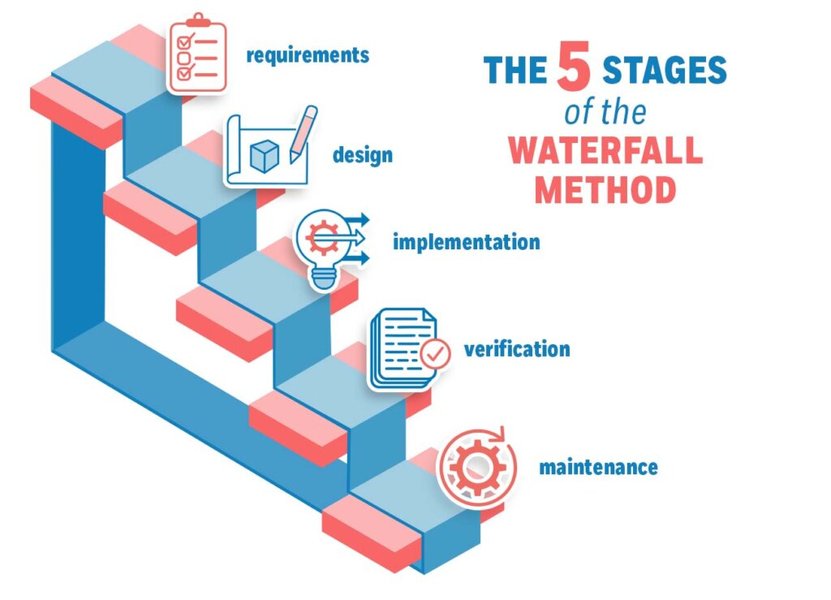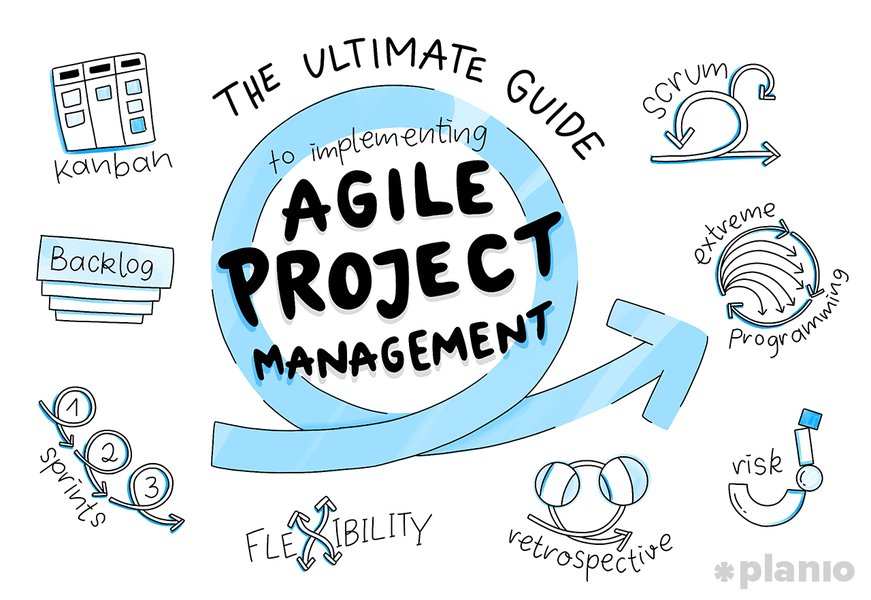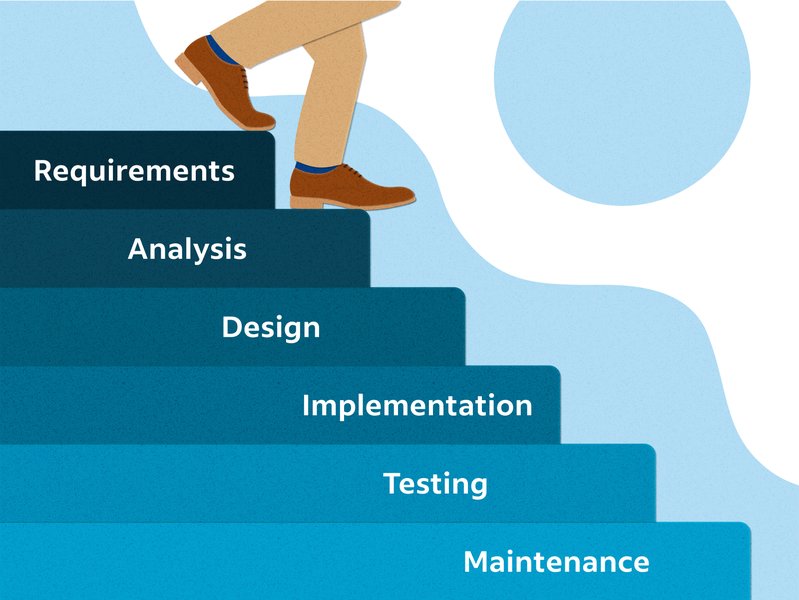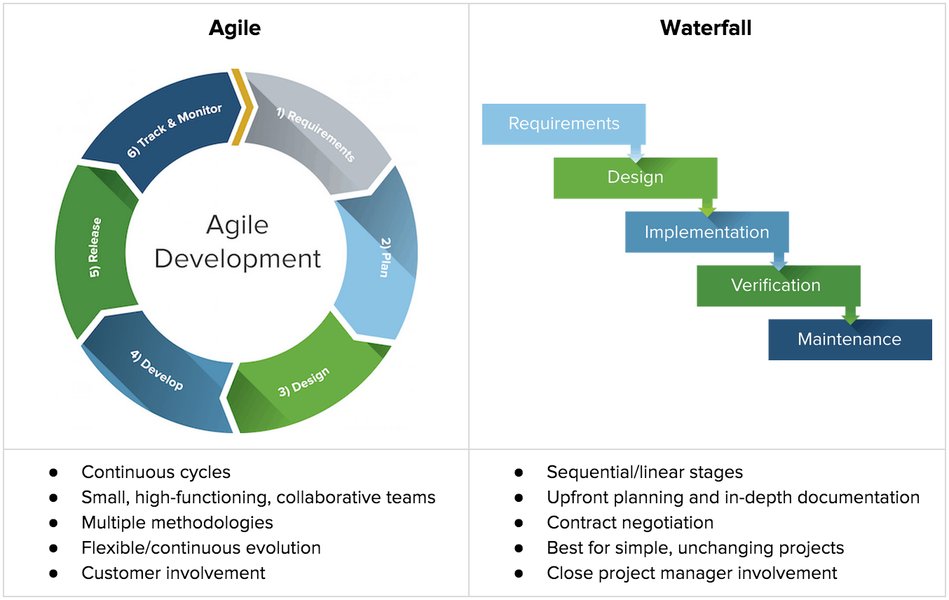Navigating the Project Management Landscape: Agile vs. Waterfall Explained
Key Insights into Project Methodologies
- Agile thrives on flexibility, iterative development, and continuous feedback, making it ideal for projects with evolving requirements and dynamic environments.
- Waterfall provides a linear, sequential, and highly structured approach, best suited for projects with fixed, well-defined requirements and predictable outcomes.
- The optimal choice often involves a hybrid approach, blending elements of both methodologies to leverage their respective strengths based on specific project needs.
In the realm of project management, two dominant methodologies stand out: Waterfall and Agile. Each offers a distinct philosophy and framework for organizing tasks, managing teams, and delivering outcomes. Understanding their fundamental differences, advantages, and disadvantages is crucial for project managers aiming to select the most effective approach for their initiatives. This comprehensive guide delves into the characteristics of both, providing insights into when and why to choose one over the other, or even a blend of both, to ensure project success in today's dynamic landscape.
Decoding the Waterfall Methodology: A Traditional Blueprint
Understanding the sequential, phase-by-phase approach of Waterfall projects.
The Waterfall methodology is a classic, linear, and sequential approach to project management. It operates on the principle that each phase of a project must be fully completed and reviewed before the next phase can begin. This creates a cascading flow, much like water descending a waterfall, hence its name. The typical phases in a Waterfall project include requirements gathering, design, implementation (development), verification (testing), and maintenance. This structured progression ensures thorough documentation and clear milestones at each stage.

Core Characteristics of Waterfall
- Linear and Sequential Progress: Tasks flow in one direction, from one phase to the next, without overlap.
- Upfront Planning: All requirements, scope, and objectives are meticulously defined and documented at the very outset of the project.
- Rigid Structure: Once a phase is completed and signed off, it is difficult and often costly to revisit or make significant changes to previous stages.
- Documentation-Heavy: Emphasizes comprehensive documentation at every phase, providing a clear audit trail and detailed records.
- Limited Customer Involvement: Customer feedback is typically gathered during the initial requirements phase and then primarily at the final stages, such as user acceptance testing.
Advantages of Waterfall
The Waterfall model offers several benefits, particularly for projects with stable and well-defined requirements:
- Predictability and Control: Provides a clear, predictable timeline, budget, and scope, making it easier to manage expectations and track progress against a baseline.
- Structured Documentation: The emphasis on detailed documentation at each phase simplifies knowledge transfer and compliance, especially for projects with strict regulatory or audit requirements.
- Stability: Ideal for projects where requirements are unlikely to change, ensuring a stable foundation for development.
- Clear Roles: Defined responsibilities for each team member throughout the project lifecycle.
Disadvantages of Waterfall
Despite its advantages, Waterfall also presents certain limitations:
- Lack of Flexibility: Its rigidity makes it challenging to accommodate changes or new requirements once a phase has been completed. This can lead to delays, budget overruns, or a final product that doesn't fully meet evolving user needs.
- Late Feedback: User feedback is often incorporated only in the later stages, increasing the risk of discovering fundamental issues closer to deployment.
- Higher Risk in Early Phases: If initial requirements are misinterpretated or incomplete, the entire project's foundation can be flawed, leading to costly rectifications in later stages.
Embracing Agile: The Iterative and Adaptable Approach
Exploring the flexible, collaborative, and continuous improvement nature of Agile projects.
In stark contrast to Waterfall, the Agile methodology is an iterative and incremental approach that prioritizes flexibility, collaboration, and continuous improvement. It emerged as a response to the limitations of traditional linear models, especially in dynamic environments like software development where requirements are prone to change. Agile projects are broken down into smaller, manageable units of work, typically called "sprints" or "iterations," which usually last 1-4 weeks. Each sprint aims to deliver a functional, shippable increment of the product, allowing for regular feedback and adaptation.

Core Characteristics of Agile
- Iterative and Incremental Development: Work is conducted in short cycles, with continuous feedback loops and incremental delivery of functional features.
- Flexibility and Adaptability: Embraces changes in scope and requirements throughout the project lifecycle, allowing teams to adapt quickly to new information or user needs.
- Customer and Stakeholder Collaboration: Encourages continuous involvement and feedback from stakeholders and end-users, ensuring the product aligns with evolving expectations.
- Team Collaboration and Self-Organization: Empowers cross-functional teams to collaborate closely, self-organize, and make decisions collectively.
- Focus on Working Software: Values delivering functional outcomes and working software over extensive, formal documentation.
Advantages of Agile
Agile's popularity stems from its ability to address many challenges faced by Waterfall projects:
- High Adaptability: Enables rapid responses to changing requirements, market conditions, or user feedback, reducing the risk of developing an irrelevant product.
- Faster Delivery of Value: Incremental releases mean functional features are delivered frequently, allowing stakeholders to see tangible progress and benefit from the product sooner.
- Improved Product Quality: Continuous testing and feedback loops help identify and address issues early, leading to higher-quality products.
- Enhanced Collaboration: Fosters strong communication and teamwork among team members and with stakeholders.
- Early Risk Mitigation: Risks and issues are identified and addressed early in the development cycles, reducing their overall impact.
Disadvantages of Agile
While powerful, Agile also comes with its own set of challenges:
- Less Predictability: The flexible nature can make it harder to predict the exact timeline, budget, or final scope at the project's outset, potentially complicating resource allocation.
- Requires Active Engagement: Demands continuous and active involvement from stakeholders and product owners, which may not always be feasible.
- Potential for Scope Creep: Without proper management, the ability to incorporate changes frequently can sometimes lead to uncontrolled expansion of the project scope.
- Intensive Team Commitment: Requires a high level of discipline, self-organization, and expertise from the development team.
Comparing Agile and Waterfall: A Side-by-Side View
A detailed comparison of key features to highlight their fundamental differences.
To further clarify the distinctions between these two methodologies, let's examine their core features side by side. This comparison will help in understanding which model aligns best with specific project characteristics and organizational environments.
| Feature | Agile Methodology | Waterfall Methodology |
|---|---|---|
| Approach | Iterative and Incremental | Linear and Sequential |
| Flexibility to Change | Highly adaptable; embraces changes throughout the lifecycle. | Rigid; changes are difficult and costly once a phase is complete. |
| Requirements | Evolve and are refined throughout the project. | Defined comprehensively upfront and are fixed. |
| Customer/Stakeholder Feedback | Continuous involvement and feedback loops. | Typically at the beginning and end of the project. |
| Documentation | Less formal, focuses on working software over extensive documentation. | Detailed and in-depth at each stage. |
| Risk Management | Early identification and mitigation through frequent iterations. | Risks are harder to address until later stages; potential for high impact. |
| Delivery | Incremental delivery of functional features in short cycles. | Product delivered after completion of all phases. |
| Team Structure | Collaborative, self-organizing, cross-functional teams. | Strictly assigned roles with defined responsibilities. |
Strategic Decision-Making: When to Choose Which Methodology
Guiding your selection based on project needs, environment, and organizational culture.
The decision between Agile and Waterfall is not about which one is inherently "better," but rather which one is the "right fit" for a given project. The optimal choice depends on several critical factors, including the project's requirements, complexity, anticipated changes, stakeholder involvement, and organizational culture.
When to Lean Towards Waterfall:
- Fixed and Well-Defined Requirements: Ideal for projects where requirements are clear, stable, and unlikely to change, such as regulatory compliance initiatives or projects with strict contractual obligations.
- Predictable Outcomes: Suitable for projects where the final product is clearly envisioned from the start, like certain construction projects or routine system upgrades.
- Emphasis on Documentation: When extensive, formal documentation is a priority for auditing, legal, or compliance purposes.
- Limited Stakeholder Involvement: If stakeholders can provide all necessary input upfront and prefer less ongoing engagement.
- Smaller, Simpler Projects: For projects with a straightforward scope and predictable path to completion.

When to Opt for Agile:
- Evolving or Unclear Requirements: Perfect for projects where requirements are dynamic, ambiguous, or expected to change as the project progresses, common in software development and product innovation.
- Dynamic Environments: When rapid adaptation to market shifts, competitor actions, or user feedback is critical.
- High Customer Collaboration: If continuous interaction and feedback from stakeholders are desired to shape the product incrementally.
- Complex Projects: Especially beneficial for larger, complex projects that benefit from breaking down work into manageable iterations and continuous learning.
- Innovation and Rapid Prototyping: When the goal is to develop and refine new ideas quickly, delivering value incrementally.

The Rise of Hybrid Approaches
Combining the strengths of Agile and Waterfall for optimal project outcomes.
Recognizing that neither methodology is a one-size-fits-all solution, many organizations are increasingly adopting hybrid approaches. This involves combining elements of both Agile and Waterfall to leverage their respective strengths and mitigate their weaknesses. For example, a project might use a Waterfall approach for the initial planning and requirements gathering phases, where clarity and stability are paramount. Once the core requirements are defined, the project might transition to an Agile methodology for the development and testing phases, allowing for iterative progress and flexibility in implementation.
This blended approach offers a balanced solution, providing the structure and predictability needed for foundational elements while maintaining the adaptability and responsiveness crucial for complex and evolving deliverables. The flexibility of hybrid models allows organizations to tailor their project management strategy precisely to the unique demands of each initiative.
Visualizing Project Suitability
An analytical look at how different project factors influence methodology choice.
To further illustrate the suitability of Agile and Waterfall methodologies based on various project characteristics, let's explore two visual representations. The radar chart below provides a qualitative assessment of how each methodology performs across key dimensions, while the bar chart compares their efficacy in different project environments.
The radar chart clearly illustrates the contrasting strengths of Agile and Waterfall. Agile excels in areas like flexibility, customer involvement, and delivery speed, reflecting its iterative nature. Waterfall, conversely, demonstrates higher suitability for predictability and thorough documentation, aligning with its sequential, upfront planning approach. Both have moderate performance in risk management, albeit through different mechanisms.
The bar chart highlights the types of projects where each methodology is most effective. Agile demonstrates high suitability for software development, product innovation, and research & development, areas that demand flexibility and continuous adaptation. Conversely, Waterfall is highly suitable for construction, regulatory compliance, and large-scale infrastructure projects, where strict adherence to upfront plans and detailed documentation is paramount.
A Project Methodology Mindmap
Visualizing the core concepts and relationships between Agile and Waterfall.
To further consolidate the understanding of these two methodologies, let's look at a mindmap that visually connects their key attributes, advantages, disadvantages, and ideal use cases. This diagram provides a holistic view, helping you quickly grasp the intricate relationships between different aspects of Agile and Waterfall.
This mindmap serves as a quick reference, highlighting that Agile is characterized by its adaptability, collaborative nature, and iterative cycles, making it suitable for dynamic projects. Waterfall, conversely, is defined by its sequential progression, thorough planning, and rigidity, fitting projects with stable and well-defined requirements. The mindmap also touches upon the emerging trend of hybrid approaches, which blend the best of both worlds.
Deep Dive: The Importance of Choosing the Right Methodology
Understanding why a thoughtful selection is paramount for project success.
Choosing the correct project management methodology is not merely a procedural decision; it's a strategic one that can significantly impact a project's success or failure. The methodology dictates how teams collaborate, how risks are managed, how changes are incorporated, and ultimately, whether the final product meets stakeholder expectations and business objectives. A mismatch between project characteristics and the chosen methodology can lead to:
- Increased Costs: Rework, delays, and inefficient resource allocation due to misaligned processes.
- Missed Deadlines: Inability to adapt to unforeseen challenges or changes, causing project schedules to slip.
- Low Quality Deliverables: Products that don't meet user needs due to lack of feedback or inability to incorporate necessary adjustments.
- Team Dissatisfaction: Frustration among team members due to ill-fitting processes or lack of clarity.
Conversely, selecting the appropriate methodology can:
- Optimize Resource Utilization: Aligning the team's efforts with the most effective workflow.
- Enhance Adaptability: Enabling the project to pivot when necessary without major disruptions.
- Improve Stakeholder Satisfaction: Delivering a product that truly addresses evolving needs and expectations.
- Mitigate Risks: Identifying and resolving issues proactively based on the methodology's strengths.
This video further elaborates on how to choose the right project management methodology, offering valuable insights into the decision-making process:
"Project Management Methodologies (HOW TO CHOOSE A METHODOLOGY)" discusses essential tips for selecting the best approach for your project.
This video provides practical guidance for project managers, emphasizing that the "best" methodology is context-dependent. It delves into criteria for evaluating project needs, team dynamics, and organizational goals to make an informed choice between various methodologies, including Agile and Waterfall. This resource reinforces the idea that understanding the nuances of each approach is critical for successful project delivery in 2025 and beyond.
Frequently Asked Questions (FAQ)
What is the main difference between Agile and Waterfall?
When should I use the Waterfall methodology?
When is Agile a better choice for a project?
Can Agile and Waterfall be combined?
Which methodology is more popular in 2025?
Conclusion
In conclusion, both Agile and Waterfall methodologies offer robust frameworks for project management, each with unique strengths and weaknesses. Waterfall provides structure, predictability, and detailed documentation, making it suitable for projects with clear, unchanging requirements. Agile champions flexibility, collaboration, and continuous adaptation, excelling in dynamic environments with evolving needs. The strategic choice between them, or the adoption of a hybrid model, hinges on a careful assessment of your project's specific characteristics, stakeholder involvement, and organizational context. By understanding these nuances, project managers can make informed decisions that optimize project outcomes and foster successful delivery in today's diverse project landscape.



